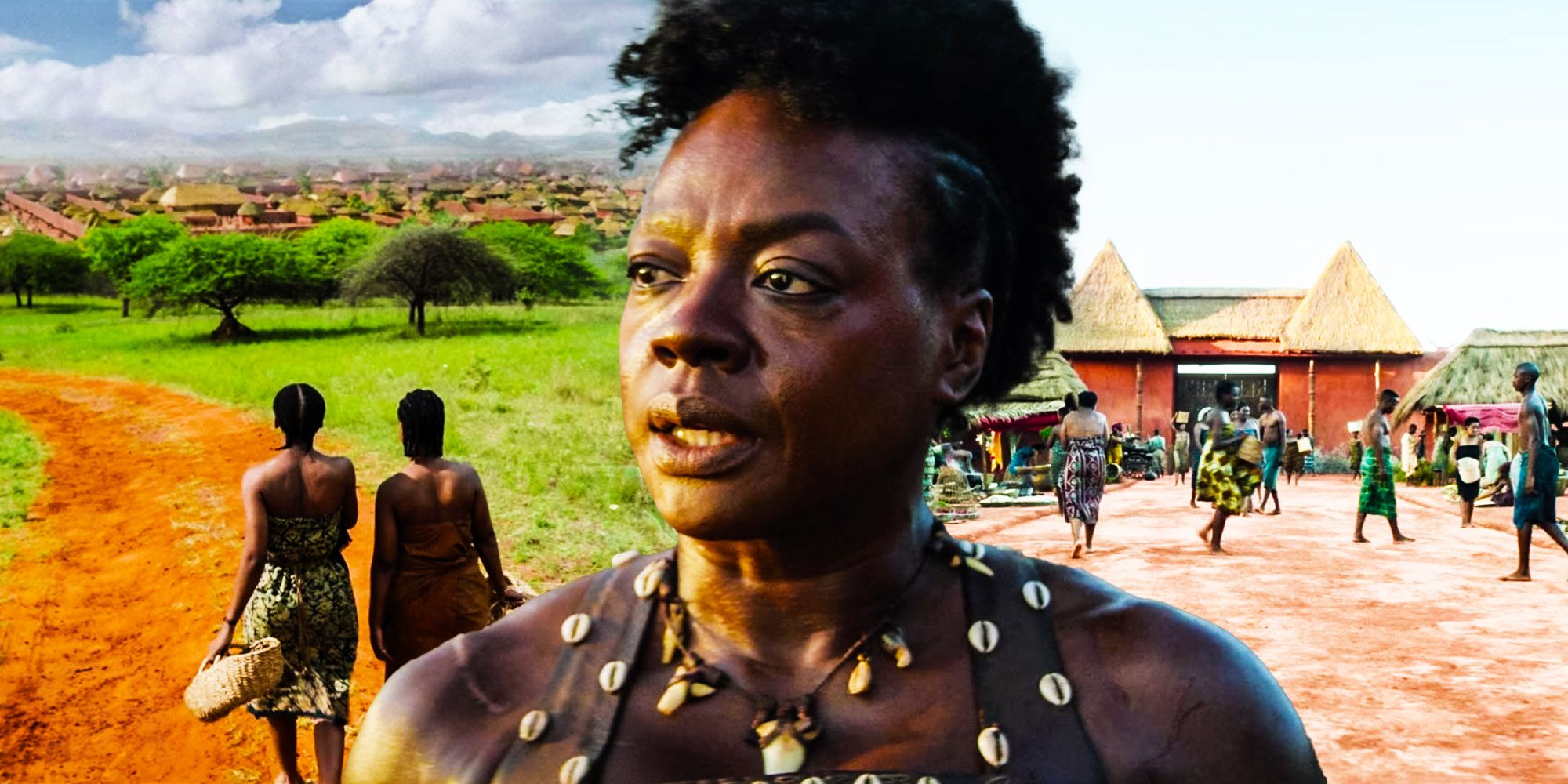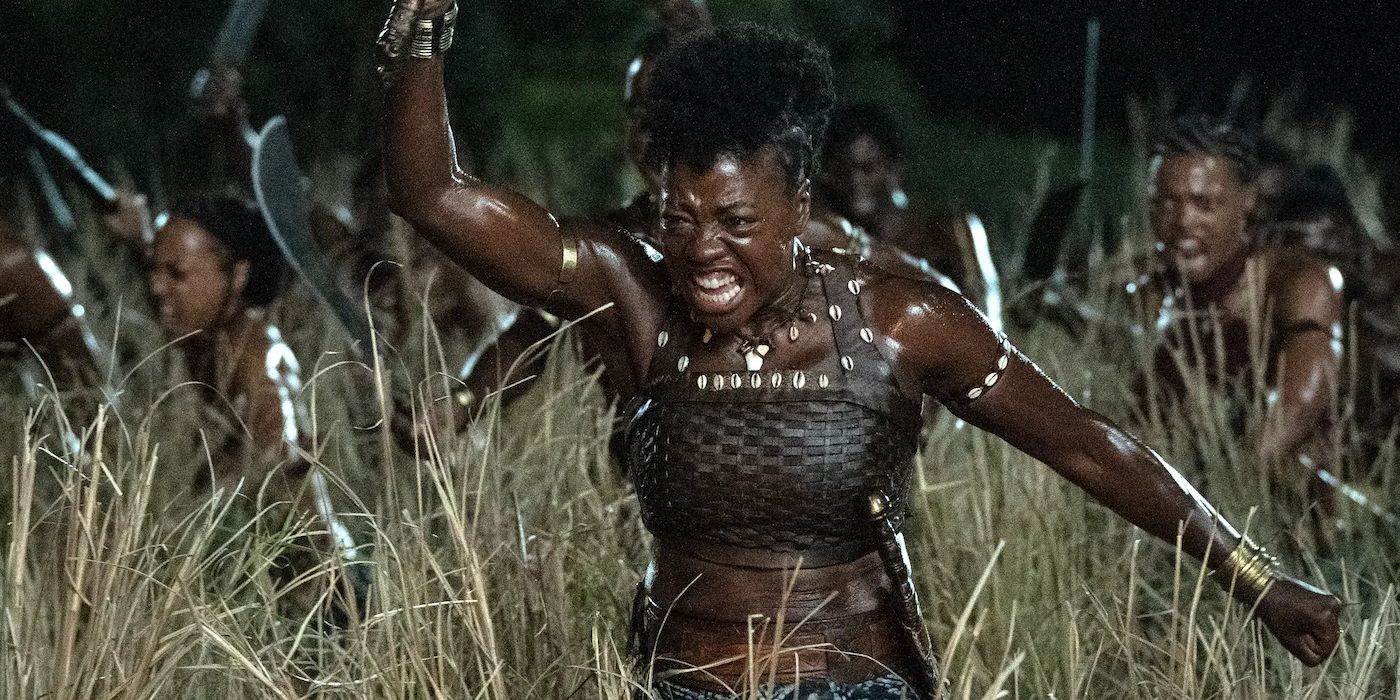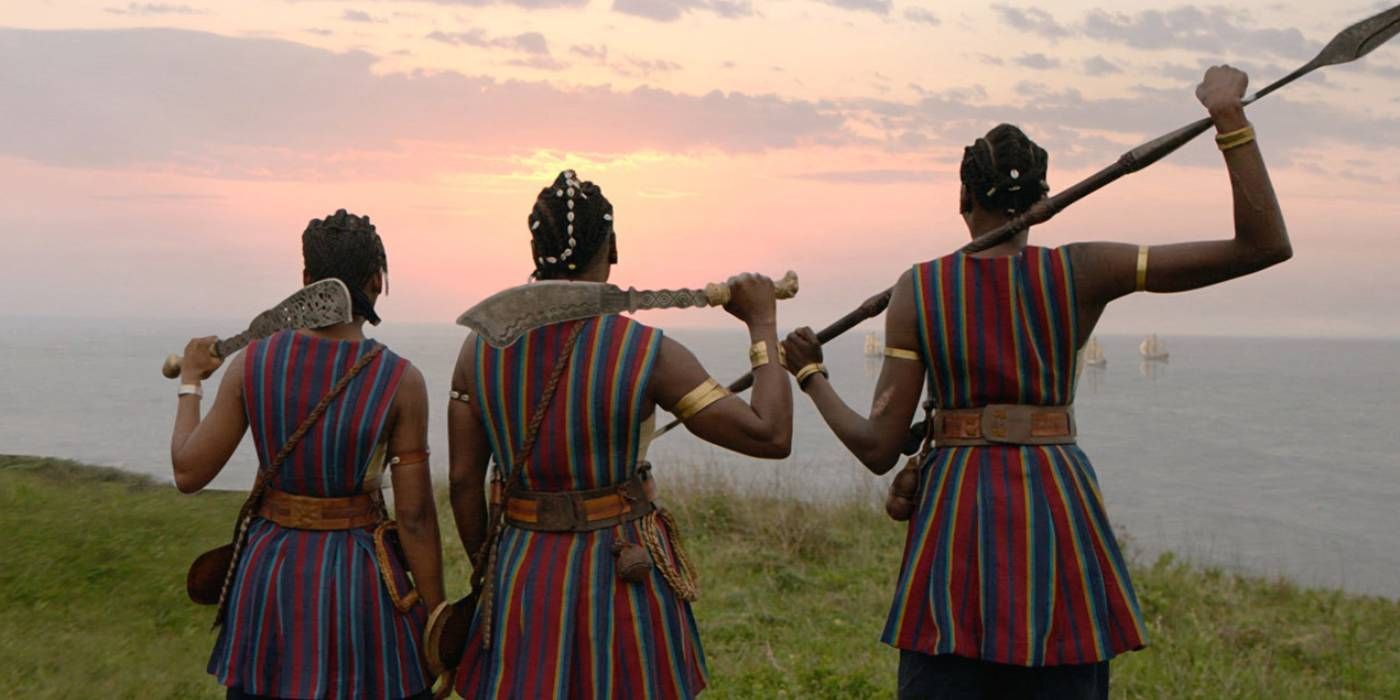While The Woman King might occur in what is today known as the Republic of Benin in West Africa, the historical epic starring Viola Davis and John Boyega wasn't filmed there. To replicate the picturesque landscape depicted by 19th-century accounts of the Kingdom of Dahomey, director Gina Prince-Blythewood and cinematographer Polly Morgan had to find locations that made the perfect backdrop to the story of King Ghezo and his Agojie. This all-women warrior cohort protected him. Davis's General Nanisca needed to lead her powerful army across burnt orange earth, through ocean-like fields, and stalk the corridors of buildings that authentically represented the period's regal architecture.
The Woman King was filmed over five months, with the crew working six days a week until 65 percent tested positive for the Omicron variant, and production shut down for two months (via The Hollywood Reporter). To tell The Woman King's true story, West Africa would have been the ideal location to shoot the film, but it proved too challenging logistically, and creative liberties had to be taken. However, despite any issues with the production, the majesty and natural beauty of the locations that were used in the movie were more than enough to convey the power and importance of its subject matter.
KwaZulu-Natal, South Africa
The opening battle scene at the Mahi village required the Agojie to appear out of lush, dense foliage, and KwaZulu-Natal is known for its tropical palm trees. Not only did shooting the film in that region help to establish the movie being in Africa, but it also offered plenty of vistas that captured sunrises and sunsets over a rich and vibrant landscape for certain dramatic or emotional scenes. To highlight certain wildlife, the Bonamazi Game Reserve offered the perfect opportunity for the characters in The Woman King to be amidst some of Africa's most notable species in a safe and legal way.
For particular scenes, such as the clifftop vista used to close out The Woman King, the southern resort town of Port Edward in KwaZulu-Natal offered not only a stunning view but also the right lighting conditions to make the most of it. Because it was facing East, the crews often had to be up in the middle of the night to prep for a real sunrise shoot rather than rely on post-production magic or CGI. That attention to detail helps make The Woman King feel grounded and authentic.
Cape Town, South Africa
To properly convey the grandeur of King Ghezo's palace, an old munitions factory on the outskirts of Cape Town, South Africa, was used. The palace was built with the path of the sun in mind, and the space offered a wide variety of textures to work with, contributing to a more modular shooting space right up until The Woman King's ending. Thanks to the fact that the building looked different from various angles, scenes meant to be in locations entirely distinct from one another could be shot in the same area with a few minor modifications.
When the Agojie finally battled the Oyo, the Wiesenhof Nature Reserve outside the city provided the perfect backdrop. Cape Town's Palmiet Beach afforded not only expansive sands for the European traders to land their ships but a nearby estuary that could double as a river for Nanisca and Nawi's escape from the Port of Quidah, represented by the Castle of Good Hope (with a few add-ons). Given the time needed to shoot, the logistical issues, and the threat of an Omicron outbreak, it makes perfect sense why multipurpose locations were ideal for The Woman King.



